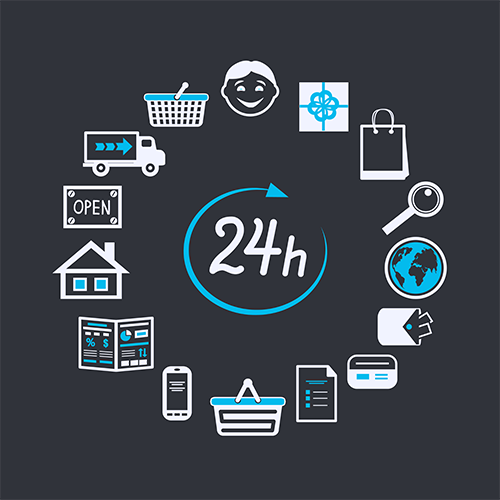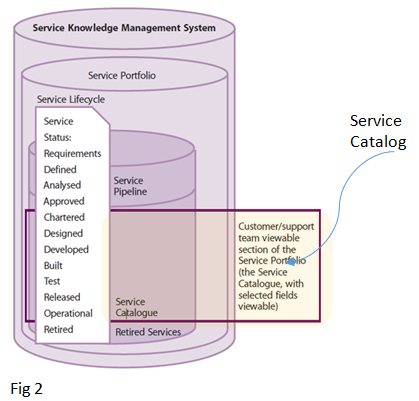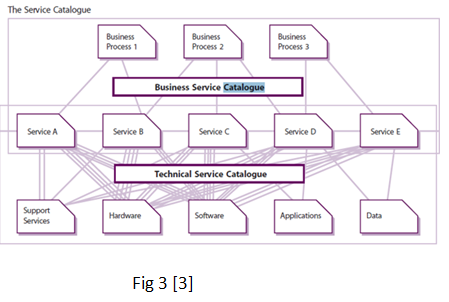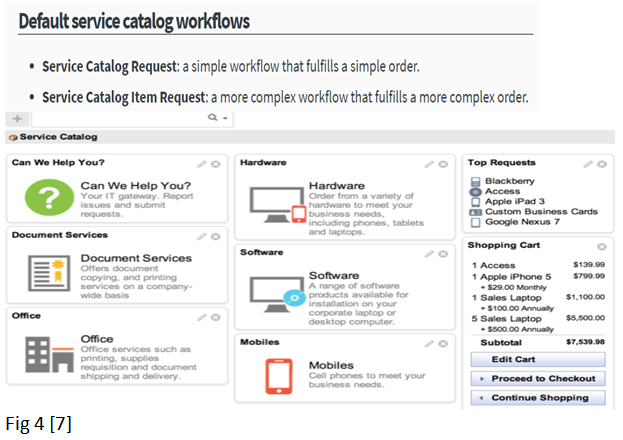Catalog Your Services for Times of ZMOT (Zero Moment of Truth) and Digital Age
Publish Date: April 17, 2018This is the new digital shelf! Consumers arrive there, 24 hours a day, ready to engage. They’re anybody’s to win or lose [1]
Digitization and Globalization are furthering today’s world of Service Offerings. The industry is fast moving away from the traditional look at, ‘Products/Solutions’ ONLY offering, and expanding to explore a holistic end-to-end approach to service offerings for a better market segment capture and towards a customer-centric focus. So, all the more important of what comprises of and how close is the purchase of a Service or a Product is from the tip of a customer’s finger in today’s age of Digitization, IoT & mobility.
As such, a Service Catalog which is an expression of a Service Provider’s operational capability within the context of a customer or a market space is the one that is much needed. This catalog with a Business focused and ably supported by the underpinning technologies, would enable customer’s view of services even to those who do not have a detailed technical understanding [3].
It is here, the strategy of a Service Provider is what will determine the contents of a Service Catalog.
ZMOT(Zero Moment of Truth) & Customer First in the Digital Age:</h2 >
Rishad Tobaccowala Chief Strategy & Innovation Officer VivaKi
Forbes in its Feb 2018 article [2], refers to Forrester; where Forrester estimates that business eCommerce is on track to hit $1.2 trillion in the US by 2021 and outlines that its crucial for businesses to accelerate their move to digital transformation.
Forbes article further talks about how the industry will evolve in 2018 and refers to Google Report citing two trends –
- Mobile e-commerce that would continue to stay – 42% of B2B customers use mobile devices during their purchasing process
- B2B buyers are getting younger – Nearly half of the B2B buyers are millennials.
Google calls the online decision-making moment – the Zero Moment of Truth, or simply, ZMOT(Zero Moment of Truth). It is all the more required that Service catalogs are available either as a digitized or a hard copy format to enable businesses to take the decision and have the ZMOT(Zero Moment of Truth) actualize in their favor.
It’s a new decision-making moment that takes place a hundred million times a day on mobile phones, laptops and wire devices of all kinds. It’s a moment where marketing happens, where information happens, and where consumers make choices that affect the success and failure of nearly every brand in the world [1]
It is here that the buyer has chosen the Services & the brand and the journey of service relationship begun.

The requirement for digital world is that the catalog should serve as more of an experience to the user, than just serving as a sales flyer or a citation of its products. E.g., is a front-end view of e-catalogs of Amazon, Flipkart, etc. Services could get represented as either print or digital catalogs. The one major distinct advantage a digital catalog could offer is regarding the capture of customer interactions. In this context of variance between digital and print catalogs, customer interactions from physical catalogs are hard to measure as against analytics that would be available from online catalogs.
Strategy to Deliver Value – The Lifecycle Approach
In the words of Peter F. Drucker, “Strategy is a commodity, execution is an art.” Catalogs are one of the many touchpoints in a buyer’s journey, either a B2B or a B2C as these catalogs include information about deliverables, prices, contact points, ordering, and request processes. As such, the strategy of a Service Provider is what will determine the contents of a Service Catalog.
The biggest VALUE from Service Catalog is in the Service Catalog serving as a central source of information for services delivered. Also, taking a lifecycle approach to Service Catalog regarding Service Catalog Management involving, constant updates, keeping current, well maintained subject to managed changes and available as appropriate would add VALUE. This should be backed by an evolving model of Service Catalog that would roll up to give a holistic view of Enterprise Service Offering.
With Service Catalog showing the relationship between services and application in an IT world; a single application could be part of more than one service, and a single service could utilize more than one application together with inter-related interfaces and dependencies. Another key VALUE is in looking at an Organization’s Portfolio of Services and its Portfolio Management, where Service Catalog comprises a combination of services that are live and those being prepared for the transition to live environment.

In managing the Portfolio of Services, the Service Catalog, which is a part of Service Portfolio would get managed and maintained as good practice is to have Service Portfolio part of central Knowledge repository for the Organization and managed through an effective Configuration Management System (CMS) for managing changes to Portfolio and Catalog.
In today’s age of Disruptive Innovation and Speed of Change enabling businesses, an essential capability is to have a mindset shift to, ‘Service Thinking.’ Thinking that would allow Organizations to concentrate on creating VALUE to customers and in offering a great customer experience by leveraging technology and inherent knowhow.
Design & MoSCoW your Catalog for Customer’s Perspective of Their Wants and Needs:
70% of Americans now say they look at product reviews before making a purchase, 79% of consumers now say they use a smart-phone to help with shopping, and 83% of moms say they do online research after seeing TV commercials for products that interest them [1]
The approach to design, manage and maintain Service Catalog should focus on what customers want and need as against the Service Provider Organization thinking what and how it should be doing. It should focus on customer perspective and its associated attributes regarding representing the Services as Core, Enabling and Enhancing which appear attractive and lucrative as well serving the need.
The Service Catalog is the only part of the Portfolio that recovers costs or earns profits. An effective service catalog can help [4] –
- Improve financial control, including cost and pricing transparency, chargebacks, and demand management (through differential pricing models).
- Increase operational efficiency, especially through the automation of ordering and provisioning.
- Provide better support for existing ITSM processes, such as incident and problem management, change management, service level management, and service reporting,
Again, from a best practice perspective [3]; Service Catalog, should comprise of a business facing view and a technical (or internal IT management) view.
This should underpin the Business Service Catalog and not form part of the customer view.

A fully completed and up-to-date Business Service Catalog and Technical Service Catalog are required before Service Level Management can design the SLA (Service Level Agreement) and support agreement structure, and before Service Level Management can set up and agree on the SLAs.
In summary, towards MoSCoW of Catalog, the MUST, the SHOULD, COULD and the WON’T aspects of the catalog have to be devised and represented appropriately based on the Service Provider’s aspiration of providing services and designing of experience for the users.
Capabilities Needed for Service Catalogs:
Gartner in its article on Critical Capability Definition for Service Catalogs [5], calls out nine critical capabilities essential to the selection of the appropriate IT service catalog tools –
- Critical Capability 1: Service Request Portal:
- Critical Capability 2: Create and Manage Orderable Services
- Critical Capability 3: Service Fulfillment Workflow Automation
- Critical Capability 4: Service Fulfillment Reporting
- Critical Capability 5: Service-Level Expectations and Performance Norms
- Critical Capability 6: Service Demand Reporting
- Critical Capability 7: Cost of Service Requests
- Critical Capability 8: Integration with Other Data Sources and Fulfillment Tools
- Critical Capability 9: Integration with Cloud Provisioning
DIY Tools enabling Cataloging of Services:
Cloud-based Enterprise Service Management tools like ServiceNow offer the capability of DIY (Do-It-Yourself) for cataloging of Services. As an example, reference # 7 in the section on References, calls out details on what it entails to building a Service Catalog from Enterprise Management Tools, like ServiceNow regarding workflows.

Conclusion:
A Service Catalog would enable an organization to better plan, deliver and support services while accurately costing and pricing them. Changes and updates should be subject to Change Management control, and the catalog should be made available as needed. The catalog focusing from a business perspective would enable the buyer’s decision making and the probability of committing to the purchase. The SEO aspect of digital catalog would further enable product and user data collation, predictions and a pop-up of likely suggestion of products that would be of interest to the buyer regarding the buyer’s historic search and or purchase.
Contact us today to know more about how YASH can help you tackle the challenges that arise during a digital transformation.
Lakshmi Nanduri – Program manger @YASH Technologies
Lakshmi Nanduri
References:
- Winning the Zero Moment of Truth eBook (2011) – Think with Google
- https://www.forbes.com/sites/theyec/2018/02/15/b2b-e-commerce-trends-to-take-notice-of-in-2018/#67b912c07339
- Axelos Publication on ITIL ® 2011 – Service Strategy, Service Design
- https://www.thinkhdi.com/library/supportworld/2013/service-catalog.aspx
- https://www.gartner.com/doc/2684018/critical-capabilities-it-service-catalog
- https://en.wikipedia.org/wiki/MoSCoW_method
- https://docs.servicenow.com/bundle/kingston-it-service-management/page/product/service-catalog-management/concept/c_ServiceCatalogManagement.html

















